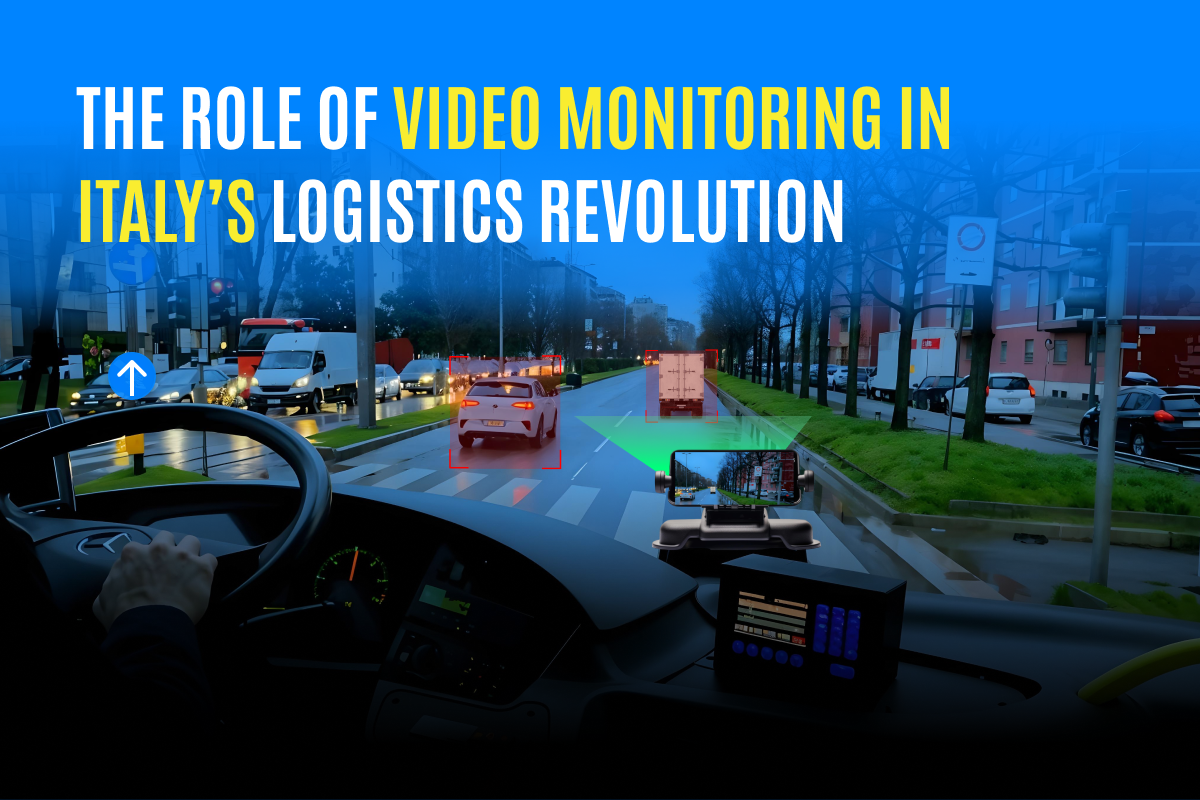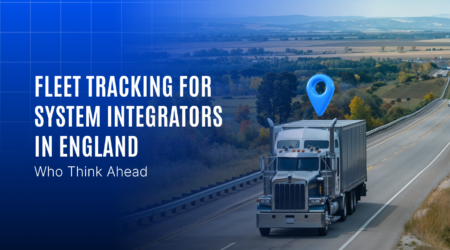How Video Monitoring in Italy is Changing Approach to Fleet Management

Italy is not only a fashion and cultural crossroad worldwide but also the heart of logistics and transportation. With heavy, concentrated urban infrastructure and increasingly complex demand for efficient supply chains, managing fleets in Italy poses specific challenges. Traffic congestion is increasing, safety is at risk, and the European regulators are becoming very strict: innovation is required here. According to new studies, the market for Europe telematics is expected to grow at a 15.24% CAGR. The volume of the market is expected to increase to 49.77 million units by 2030 from 24.49 million units in 2025. Among them, video monitoring is a revolutionary technology, redefining the face of fleet management in Italy.
What is Video Monitoring in Fleet Management?
Video telematics includes camera surveillance, GPS tracking, and accurate analytics to facilitate real-time monitoring of the fleets. The feature’s role is to bridge the gap between traditional telematics methods and modern video-based safety solutions. For instance, it helps fleet managers have a better understanding of their operations by combining captured video footage with basic vehicle data like speed and location, not to mention driving behavior.
Here are some of the major core components:
- Surveillance Through Onboarded Cameras: Video footage of the road, driver, and surrounding environment in real-time.
- GPS Tracking: Live tracking of the fleet through the data received via satellite communication.
- Accurate Analysis: Reports and real-time updates help fleet managers monitor and analyze important events.
- Cloud Integration: Enables instant access to video and data for swift decision-making.
Why Video Monitoring in Italy is Important?
Fleet operations in Italy are also challenged by circumstances that make video telematics absolutely necessary:
- Urban Congestion: Italy has many congested cities and the traffic congestion is impacting delivery time and fuel consumption.
- Safety: The accident rate in urban areas is high, and proper monitoring and proactive safety measures are required.
- Regulatory Compliance: The European Union has regulations that require strict safety and emission standards for commercial fleets.
- Rising Expectations: As the e-commerce and logistics industry is rapidly growing, customers obviously expect deliveries that are on time and damage-free.
The video telematics feature addresses above mentioned issues very well. It provides visibility and insights for managers to make better decisions.
Benefits of Video Telematics for Fleet Management
- Improved Safety: Video telematics enables monitoring to identify driving behavior and patterns that can be proven risky. Such behaviors include harsh speeding, distracted driving, lane departing, harsh braking, and much more. Alerts, history playback of the events, and detailed reports allow managers to take immediate action against these events. This helps in ensuring that the driver and vehicle are safe.
- Cost Efficiency: Video monitoring saves fuel by promoting good driving skills and route optimization. Moreover, it reduces repair costs by locating and fixing problems before they become big issues.
- Regulation Compliance: Detailed video footage along with driving reports helps ensure that the vehicle complies fully with European safety standards and provides verifiable records in case of investigations or lawsuits.
- Operational Transparency: Telematics data, when combined with video evidence, gives a transparent view of operations to fleet managers. It fosters trust with clients and accountability on the fleet.
Video Telematics Applications in Fleet Operations
- Analysis of Accidents
Accidents leave behind an undeniable piece of evidence with video footage that establishes liability. It guards fleet operators against false claims and expedites the process for the insurance company to settle. - Driver’s Training and Development
Video telematics records real-life scenarios that can be used to train drivers. Examples given in detail improve driving habits and reduce future risks. - Cargo Security
Onboard cameras offer security to fleets carrying precious or sensitive products. Through this feature, the managers can trace the cargo in real-time and ensure its safe delivery. This footage may be used as evidence to resolve disputes over cargo damage or mishandling. - Prevention of Thefts
Video telematics can detect theft and unauthorized entry. If there is an attempt at theft, real-time alerting ensures timely action to curtail losses as much as possible. The presence of visible cameras also deters theft attempts because the perpetrators may be filmed.
Why Select Fleet Management Software for Video Monitoring in Italy?
Fleet managers in Italy require customized solutions to overcome their specific issues. The advanced fleet management software provides video telematics features. Key highlights are as follows:
- User-Friendly Interface: Easy to monitor and manage for fleet operators.
- AI-Driven Insights: Accurate analysis to enhance driver behavior and operational efficiency.
- Regulatory Support: Ensures compliance with European fleet safety standards.
- Customizable Alerts: Allows managers to receive notifications tailored to specific needs.
With the software, Italy’s fleet managers can ensure safer roads, optimized operations, and satisfied customers.
Success Stories from Fleet Operators Using Video Telematics
Italy’s urban hubs have seen dramatic improvements after a fleet operator started using video telematics. Studies reveal that video-based monitoring systems can reduce accidents by up to 40% because of better analysis of driver behavior. Real-time data optimizes routes, resulting in a significant reduction in delivery delays. Furthermore, fleets have recorded fuel savings of around 10-15% due to the encouragement of more efficient driving practices.
These concrete outcomes illustrate how video telematics is revolutionizing the face of fleet management by providing safety, efficiency, and cost savings for businesses operating in complex urban environments.
Future of Fleet Management in Italy with Video Monitoring
Italy is growing rapidly as a hub for logistics and is likely to see increased use of video telematics in the future. Trends include:
- AI-powered dashcams are cameras that use AI to provide predictive analysis and automated reporting. In addition, integrating an AI video generator can help fleet managers create visual safety reports and educational videos that showcase driving behavior insights and compliance improvements using real telematics data.
- Strong data security through robust systems for protection against breaches of sensitive fleet data.
- Integration of advanced technologies: Features like text to speech video can convert critical alerts or reports into audio,ensuring drivers stay informed without taking their eyes off the road.
- Investment in advanced fleet management systems ensures Italy’s fleets remain competitive and future-ready.
Conclusion
Video telematics is more than technology; it’s about safer roads, building trust with clients, and making fleet managers empowered to make smarter decisions. Ideally, in such countries as Italy, where issues of congestion, concerns about safety, and continuously growing demands from customers combined, video telematics presents a way forward. By embracing this innovative solution, fleet operators can fundamentally transform their operations, reduce risks, and stay ahead in an evolving landscape. As Italy grows to become one of the great logistics hubs, video monitoring in Italy is no longer an improvement; it is the right step toward a more safe and efficient future for all.


